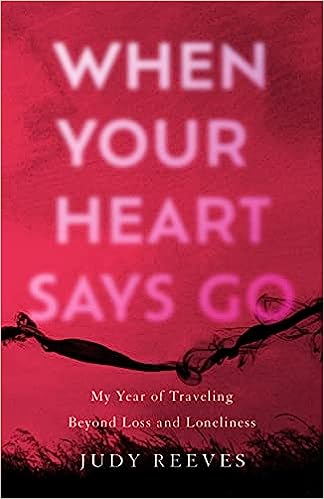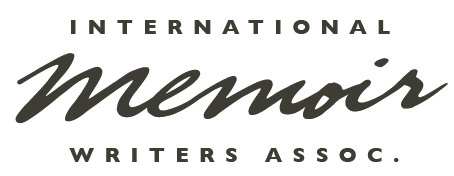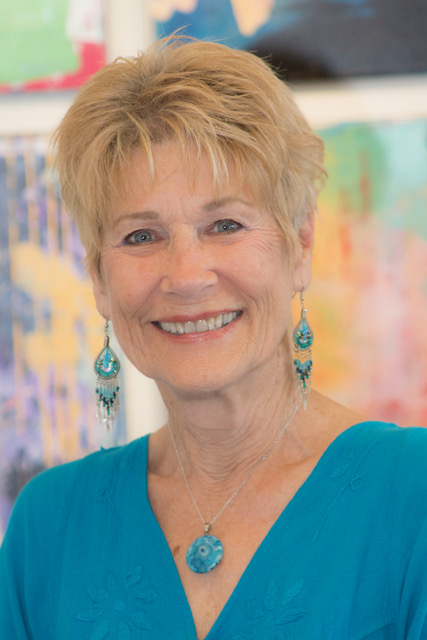- How did you first discover SDMWA?
Marni Freedman and I have been friends and colleagues for many years. We both teach and lead groups at San Diego Writers, Ink and so I was nearby when inspiration paid a visit to Marni (as it often does), in 2017 and she and her band of volunteers started the group. I’ve been a member and supporter since the organization’s beginnings and will continue ad infinitum. I’m a great believer in the importance and value of community and SDMWA (IMWA) provides a warm and welcoming place for all.
- Have you always been a writer?
I always knew I was going to be a writer, at least since I was old enough to imagine how I wanted to spend my time. My first conscious awareness of what you could do with language came as I played around making sentences with my spelling-word assignments. I read the Sunday comic strip “Brenda Starr, Reporter” and knew that’s what I wanted to do—travel the world in search of stories then write them. My best friend and I climbed up to my tree house with our notebooks and pencils and wrote stories together. I was editor of my sixth-grade school paper and on staff of the student paper all through high school. I wrote plays for my drama classes and poetry and stories for my English classes. My first poetry workshop was a city-wide competition in my junior year of high school. And so it went. After school and out into the real world I became a “commercial” writer and had a long career writing for newspapers, radio and television; I worked in PR and advertising and marketing, always as a writer. Then, in 1987 my husband died and I became a single woman, living alone, and my life changed. After a long journey of solitude and self-questioning, I committed to life as a different kind of writer—writing for myself. I became a student of writing, created an ongoing course of study for myself, and developed a regular writing practice. That’s how I have lived these last thirty-plus years. Writing and studying the art and craft of writing, teaching and learning.
3. What impact do you think writing classes have made on your writing?
I set out to study with the best and applied for workshops and retreats and took courses with writers whose work I respected. I found writing books and created my own classes from them, I committed to regular writing groups and worked with peers and instructors. My own teaching has also served as opportunities to learn and grow and explore. My students are also my teachers.
4. We’d love to hear about what you are presently writing.
The lead up to the release of my memoir has taken time from longer projects. I (once again) interrupted the revision of my second novel to spend more time in the pre-publication waters where I am currently hip-deep. So my work now is on smaller pieces, flash and micro memoir and essays and the like. Recently I have committed to a morning practice of timed, focused writing in spiral-bound looseleaf notebooks that follows my daily journal writing. And of course, I continue to write at weekly sessions with my Thursday Writers group and other groups I work with.
5. Who are your favorite authors? Favorite memoirs?
Ah, these are the hard questions. So much depends on who and what I’m currently reading. Annie Dillard was an early favorite and one whose work I studied. Joan Dideon, too. Lots of John Steinbeck in my library that I return to and return to. I love the lyricism and grit of Toni Morrison (who doesn’t!) and the friendly conversational style of Abigail Thomas. Some currents who I read most everything by: Ann Patchett and Anthony Doerr. Ross Gay’s poetry and books of delight are favorites. And when we talk about poets: Mary Oliver, Dorianne Laux, David Whyte, and I want to mention Roger Aplon, who is a friend and poet who continues to influence my writing.
Favorite memoirs: Well, anything by Abigail Thomas. My earliest read by her: A Three Dog Life, confirmed me as a life-time reader and student. Mary Morris’s Nothing to Declare (and so many others; she’s my model for traveloirs). The Glass Castle, Jeannette Walls, Death and Other Inconveniences, Sue William Silverman. Heating &Cooling–52 Micro Memoirs, Beth Ann Fennelly, which has delighted my reading and influenced my writing. The Men We Reaped, Jesmyn Ward; A Year of Magical Thinking, Joan Dideon; Fun Home, Alison Bechdel (a graphic memoir). Traveling with Pomegranates, Sue Monk Kidd and Ann Kidd Taylor; Liar’s Club, Mary Karr was an early influence.
I guess I want to make a special section for traveloirs and collections of personal narrative travel essays: all of Jan Morris’s and Paul Theroux’s books line my shelves. Any and all by Pico Iyer. Also some old ones: Blue Highways, William Least Heat Moon; Travels with Charley, John Steinbeck; A Moveable Feast, Ernest Hemingway; Colossus of Maroussi, Henry Miller; and of course On the Road, Jack Kerouac.
6. Any advice for new writers?
Create a regular writing practice and commit to writing as close to daily as you can—even if it’s only for fifteen or twenty minutes. Keep a writer’s notebook and write down details, what you notice, those genius thoughts that alight and then are gone. Trust your instincts and intuition and also find good teachers; immerse yourself in a writing community however you can—in person, virtual, and support other writers. We need each other. Read. Read a lot. Read widely. Books are the best teachers. Notice what you like and whose work resonates with you and then deconstruct the books to find out how the writer did what they did. First and always: Write!
7. Judy, please tell us about your most recent book and its launch and what you’ve learned about the process.
 When Your Heart Says Go – My Year of Traveling Beyond Loss and Loneliness released October 10. The first public event is scheduled for Saturday, October 21, 4-6 pm at San Diego’s Central Library and I’d love for any and all IMWA members to come.
When Your Heart Says Go – My Year of Traveling Beyond Loss and Loneliness released October 10. The first public event is scheduled for Saturday, October 21, 4-6 pm at San Diego’s Central Library and I’d love for any and all IMWA members to come.
Briefly: Nearing fifty and grieving the death of my husband, I sold everything, bought an around-the-world airline ticket, and set off on a solo journey. Months of solitude and loneliness in foreign countries challenged me to examine my old ideas and explore my heart’s deepest longings as I searched for who I might become in my new life.
Set in 1990-91, the events in the book take place in many foreign landscapes as the outer journey serves as a contain for the inner—the more I experience of the world, the more I learn about myself and the closer I get to realizing my lifelong dream of being a writer. Some early readers and my editor have called it my writer’s origin story.
Over the years after returning from that journey, I’ve written both fiction and nonfiction based on my memories and experiences, poetry as well. But it wasn’t until 2016 that I committed to writing the memoir as a complete and contained story. Still, nothing was wasted; it never is with us writers. There are many ways to tell a story and some of the writing—even journal writing—can serve as a prelude to the complete story, and each iteration can reveal more to us of ourselves. Even when the memoir is completed and the book published, it’s not done and over. I’m still learning—from memories of the time itself as well as from the writing of the memoir. Talking about the book, and writing about it from the perspective of the other side—that is, the book is published now, and there’s still more to learn, more to tell, and something new is being born even now.
The marketing and PR and finding ways to connect with readers and actually making those connections is a whole different kind of challenge. I’m enjoying it—especially the connection part, but I think I’d rather be writing.
8. Please let us know how we can reach you. Website? Social channels?
My website: www.judyreeveswriter.com
I have a monthly newsletter and invite sign-ups via my website (with a thank you gift for signing up)
I’m on Facebook: https://www.facebook.com/judyreevestoo.
And Instagram: https://www.instagram.com/judyreeveswriter/

